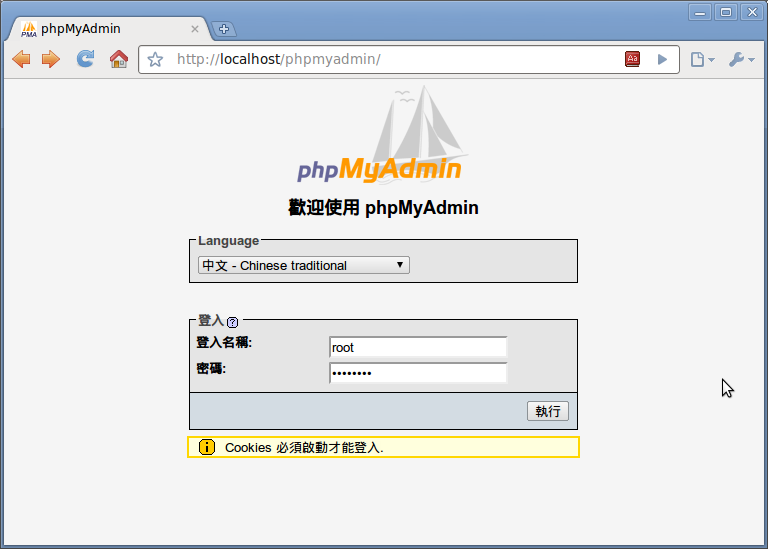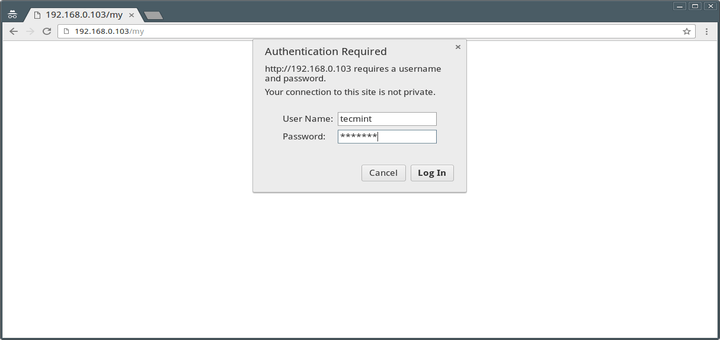

- FIND OUT LOCALHOST PHPMYADMIN PASSWORD HOW TO
- FIND OUT LOCALHOST PHPMYADMIN PASSWORD INSTALL
- FIND OUT LOCALHOST PHPMYADMIN PASSWORD UPDATE
- FIND OUT LOCALHOST PHPMYADMIN PASSWORD SOFTWARE
FIND OUT LOCALHOST PHPMYADMIN PASSWORD UPDATE
UPDATE er SET Password=password('NEWSTRONGPASSWORD') WHERE User='root' Replace the NEWSTRONGPASSWORD with your chosen new strong password.

If you can, log in to your server as a system user with root privileges and run these commands as su or sudo commands using those administrative privileges. Although you can login to your server as root user, it is highly recommended not to. Login to your server using SSH.These commands must be run with root user privileges.
FIND OUT LOCALHOST PHPMYADMIN PASSWORD HOW TO
Pic 2: Viewing the MySQL root password How to Reset/Change MySQL Password The MySQL root password that is displayed on your terminal screen at the end of the RunCloud agent installation on your server (example below is installation on DigitalOcean) is meant to be kept for safekeeping elsewhere, but if you forgot to copy it down, you can still retrieve it. If you are on a Mac or Linux, there is already a built-in Terminal app installed.

On a Windows machine, you can download the PuTTY software. If you have no prior experience managing MySQL, don’t worry, with RunCloud, it is as easy as ABC.įirst, you need a terminal to work on. However, if you want to avoid any of these risks then SSH is the way to go. But it remains popular as it is fairly simple to use, even for non-technical people, and it provides an easily accessible tool that can save you time when you just need to run some simple tasks. Some administrators do not like to use a public-facing web app like phpMyAdmin because of the potential security vulnerabilities that it poses.
FIND OUT LOCALHOST PHPMYADMIN PASSWORD INSTALL
You can manage either by accessing the server using a terminal and run the commands from there or you can safely install a MySQL database manager like phpMyAdmin as a web app using the RunCloud script installer. On RunCloud, there are a few ways to manage your MySQL server and database.
FIND OUT LOCALHOST PHPMYADMIN PASSWORD SOFTWARE
MariaDB is a community-driven package by the original developers of MySQL, with the promise of future compatibility, hence, terminal commands and software tools for MySQL database can be used for MariaDB as well. RunCloud uses MariaDB, an enhanced drop-in replacement for MySQL, as a database. On Ubuntu and Debian: sudo /etc/init.Ever forgotten or just wanted to change your MySQL password? You’ve come to the right place – in this guide, we’ll walk you through how to set, change and recover your MySQL root password as well as other useful MySQL commands. Now the password has been reset, we need to restart MySQL by logging out: quit Next, instruct MySQL which database to use: use mysql Įnter the new password for the root user as follows: update user set password=PASSWORD("mynewpassword") where User='root' Īnd finally, flush the privileges: flush privileges Note: No password is required at this stage as when we started MySQL we skipped the user privileges table. Note: The ampersand (&) at the end of the command is required.Īll we need to do now is to log into MySQL and set the password. Again, note that you will need to have sudo access for these commands so you don't need to worry about any user being able to reset the MySQL root password: sudo mysqld_safe -skip-grant-tables &

Next we need to start MySQL in safe mode - that is to say, we will start MySQL but skip the user privileges table. If you are using Ubuntu or Debian the command is as follows: sudo /etc/init.d/mysql stopįor CentOS, Fedora, and RHEL the command is: sudo /etc/init.d/mysqld stop


 0 kommentar(er)
0 kommentar(er)
